H-ASP-ARG-VAL-TYR-ILE-HIS-PRO-PHE-HIS-OH
- CAS NO.:34273-12-6
- Empirical Formula: C56H78N16O13
- Molecular Weight: 1183.32
- MDL number: MFCD00167490
- SAFETY DATA SHEET (SDS)
- Update Date: 2024-11-19 20:33:22

What is H-ASP-ARG-VAL-TYR-ILE-HIS-PRO-PHE-HIS-OH?
Chemical properties
White powder
Definition
ChEBI: Angiotensin (1-9) is a nine amino acid peptide which is formed when angiotensin converting enzyme 2 (ACE2) hydrolyzes the carboxy terminal leucine from angiotensin I. It is a anti-cardiac hypertrophy agent. It has a role as a human metabolite, a rat metabolite, an antihypertensive agent and a cardioprotective agent. It is a tautomer of an angiotensin (1-9) dizwitterion.
Biological Activity
angiotensin i/ii (1-9) is a peptide (asp-arg-val-tyr-ile-his-pro-phe-his) containing the amino acids 1-9 that are converted from angiotensin i/ii peptide.angiotensin i is formed by the action of renin on angiotensinogen, which has 12 amino acids and is an α-2-globulin produced constitutively and released into the circulation mainly by the liver. renin cleaves the peptide bond between the leucine (leu) and valine (val) residues on angiotensinogen, creating the ten-amino acid peptide angiotensin i. angiotensin i is converted to angiotensin ii (aii) through removal of two c-terminal residues by the enzymeangiotensin-converting enzyme (ace), primarily through ace within the lung.angiotensin is a peptide hormone that causes vasoconstriction and a subsequent increase in blood pressure. angiotensin also stimulates the release of aldosterone, which promotes sodium retention in the distal nephron so that drives blood pressure up.figure1 formula of angiotensin i/ii (1-9)
References
1. Basso N, Terragno NA (December 2001). "History about the discovery of the renin-angiotensin system". Hypertension 38 (6): 1246–9. 2. Richard A. Preston. et. (1998). “Age-Race Subgroup Compared With Renin Profile as Predictors of Blood Pressure Response to Antihypertensive Therapy”. JAMA. 1998;280(13):1168-1172.3. Williams GH, Dluhy RG (2008). "Chapter 336: Disorders of the Adrenal Cortex". In Loscalzo J, Fauci AS, Braunwald E, Kasper DL, Hauser SL, Longo DL. Harrison's principles of internal medicine. McGraw-Hill Medical.
Properties of H-ASP-ARG-VAL-TYR-ILE-HIS-PRO-PHE-HIS-OH
| Density | 1.46±0.1 g/cm3(Predicted) |
| storage temp. | -15°C |
| solubility | ≥118.3 mg/mL in DMSO; insoluble in EtOH; ≥51 mg/mL in H2O |
| form | solid |
| pka | 2.91±0.10(Predicted) |
Safety information for H-ASP-ARG-VAL-TYR-ILE-HIS-PRO-PHE-HIS-OH
Computed Descriptors for H-ASP-ARG-VAL-TYR-ILE-HIS-PRO-PHE-HIS-OH
New Products
4-Fluorophenylacetic acid 4-Methylphenylacetic acid N-Boc-D-alaninol N-BOC-D/L-ALANINOL Tert-butyl bis(2-chloroethyl)carbamate 3-Morpholino-1-(4-nitrophenyl)-5,6-dihydropyridin- 2(1H)-one Furan-2,5-Dicarboxylic Acid Tropic acid S-2-CHLORO PROPIONIC ACID ETHYL ISOCYANOACETATE 2-Bromo-1,3-Bis(Dimethylamino)Trimethinium Hexafluorophosphate (6-METHYL-[1,3]DITHIOLO[4,5-b]QUINOXALIN-2-ONE INDAZOLE-3-CARBOXYLIC ACID 4-IODO BENZOIC ACID (2-Hydroxyphenyl)acetonitrile 4-Bromopyrazole 5,6-Dimethoxyindanone 2-(Cyanocyclohexyl)acetic acid 4-methoxy-3,5-dinitropyridine 2-aminopropyl benzoate hydrochloride 1-(4-(aminomethyl)benzyl)urea hydrochloride diethyl 2-(2-((tertbutoxycarbonyl)amino) ethyl)malonate tert-butyl 4- (ureidomethyl)benzylcarbamate Ethyl-2-chloro((4-methoxyphenyl)hydrazono)acetateRelated products of tetrahydrofuran

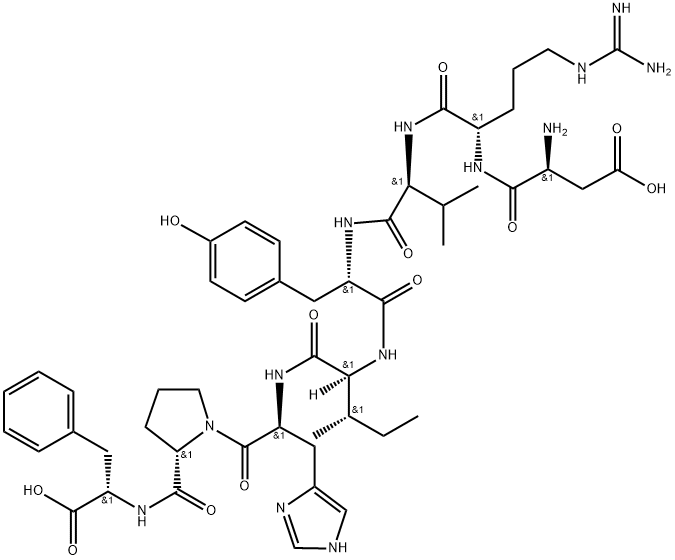
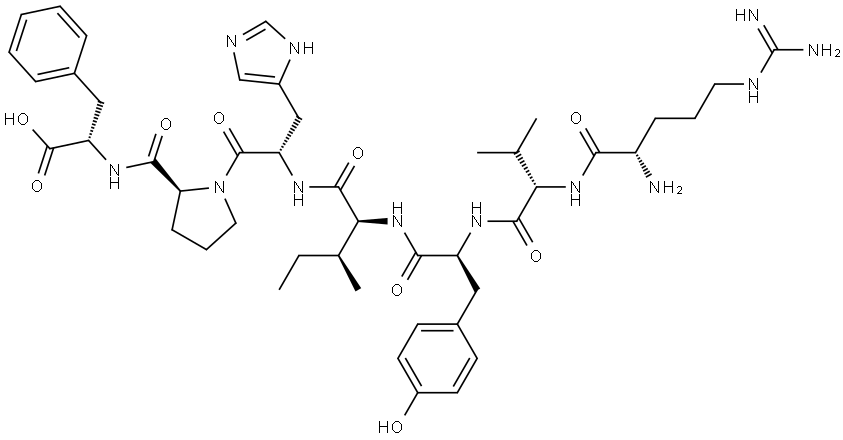
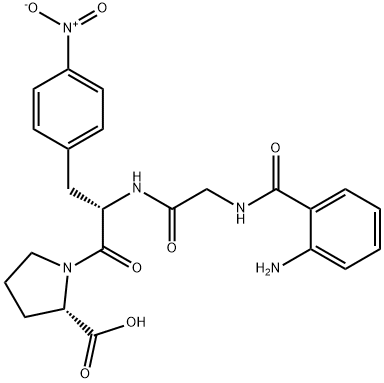

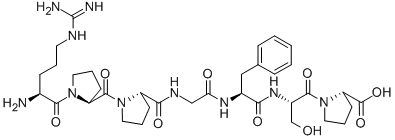
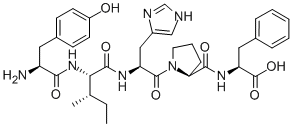
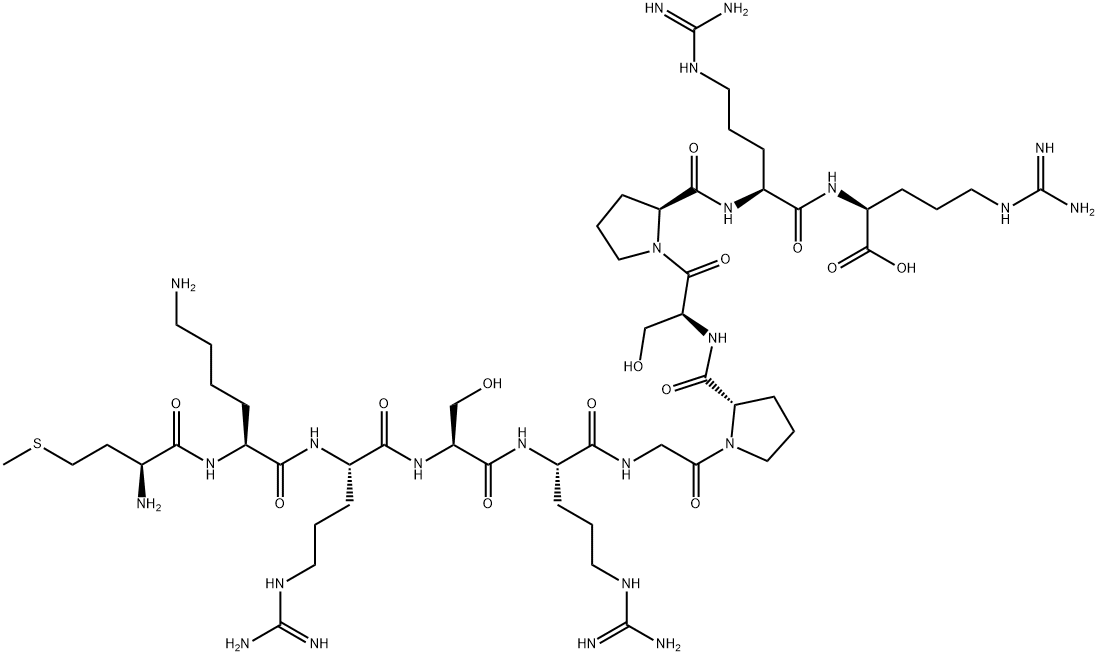
You may like
-
 2033-24-1 98%View Details
2033-24-1 98%View Details
2033-24-1 -
 42831-50-5 5-METHYLISOXAZOLE-4-CARBOXYLIC ACID 98%View Details
42831-50-5 5-METHYLISOXAZOLE-4-CARBOXYLIC ACID 98%View Details
42831-50-5 -
 1975-50-4 98%View Details
1975-50-4 98%View Details
1975-50-4 -
 2-HYDROXY BENZYL ALCOHOL 98%View Details
2-HYDROXY BENZYL ALCOHOL 98%View Details
90-01-7 -
 2-Chloro-1,3-Bis(Dimethylamino)Trimethinium Hexafluorophosphate 221615-75-4 98%View Details
2-Chloro-1,3-Bis(Dimethylamino)Trimethinium Hexafluorophosphate 221615-75-4 98%View Details
221615-75-4 -
 61397-56-6 CIS BROMO BENZOATE 98%View Details
61397-56-6 CIS BROMO BENZOATE 98%View Details
61397-56-6 -
 14714-50-2 (2-Hydroxyphenyl)acetonitrile 98+View Details
14714-50-2 (2-Hydroxyphenyl)acetonitrile 98+View Details
14714-50-2 -
 118753-70-1 98+View Details
118753-70-1 98+View Details
118753-70-1